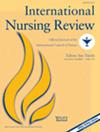Perceptions of Good Death and Death Literacy Levels of Nurses Working in Palliative Care: A Cross-Sectional Study
Abstract
Aim
To determine the perceptions of good death and death literacy levels of Turkish nurses working in palliative care services and the factors affecting their perceptions of good death.
Background
Death literacy is defined as the acquisition of the knowledge and skills necessary to understand end-of-life care and contribute to a good death.
Methods
For this cross-sectional study, sample consisted of 162 Turkish nurses working in palliative care services. The data were collected using the Socio-demographic Information Form, Good Death Scale (GDS), and Death Literacy Index (DLI). The data were analyzed by Pearson correlation, independent sample t test, and one-way ANOVA. Hierarchical regression analysis was performed to determine the predictors of good death perception. The STROBE checklist was used in the study.
Findings
The mean GDS score was 59.53 ± 4.49, and the mean DLI score was 100.70 ± 12.11. It was determined that those who are older, male, married, have worked longer in the clinic, and have knowledge about a good death have higher average scores on the GDS. The models explain 91.8% of the variance in the perception of good death.
Discussion
Our study shows that as death literacy increases, nurses’ perceptions of a good death tend to decrease. This situation suggests that as nurses’ knowledge and awareness of death increase, the inadequacies of the healthcare system and the impact of limited resources may cause them to develop a more negative perception. Death literacy in nurses is a new concept, and further studies are needed in different cultures.
Conclusions
In the study, it was observed that death literacy levels and good death perceptions of nurses were above average, and as the death literacy level of nurses increased, their good death perceptions decreased. Age, gender, marital status, working time in the clinic and knowledge about good death affect the perception of good death of nurses working in palliative care.
Implications for nursing
By improving their understanding of death literacy and the principles of a good death, palliative care nurses can achieve greater job satisfaction and develop a more positive attitude toward end-of-life care. In addition, systematically incorporating death literacy into nursing education curricula and continuing professional development programs, and the establishment of evidence-based clinical guidelines and standard care protocols will improve the quality of palliative care services.

 求助内容:
求助内容: 应助结果提醒方式:
应助结果提醒方式:


